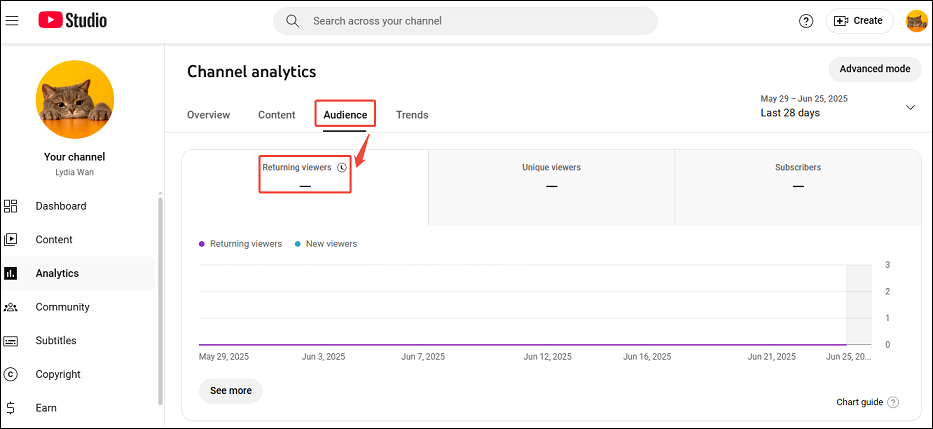In your YouTube analytics, one of the most powerful yet often overlooked metrics is “returning viewers.” This metric provides deep insight into how well your content connects with your audience. In this post, we’ll break down what returning viewers are on YouTube, why they matter, how to find this data, as well as tips to increase this metric. Let’s explore it now!
What Are Returning Viewers on YouTube
According to YouTube Analytics, returning viewers are users who have already watched your channel at least once before and then came back to watch more content within a specific time period.
These viewers aren’t necessarily subscribers, but they are engaged. They may find the content you produce valuable and then check your channel regularly.
Why Knowing Your YouTube Returning Viewers Matters
Let’s understand why knowing your YouTube returning viewers data is essential:
- Indicate your content value: If someone returns to your channel, it means they found something they liked. This is a strong signal to YouTube that your content is valuable and worth promoting.
- Drive your channel growth: Returning viewers watch more of your videos. If they find your videos helpful, they’re more likely to like, share, and comment on your videos and further subscribe to your channel.
- Reflect on your audience retention: These viewers aren’t just sampling your content; they’re coming back for more. This indicates strong audience retention, which is often a better measure of channel health than raw view counts.
Where to Find Returning Viewers Data in YouTube Analytics
Now that YouTube returning viewers is important for your channel, where can you find this data? Simply follow these steps:
Step 1. Navigate to YouTube on your web browser.
Step 2. Click on your profile picture in the top right corner of the interface and choose YouTube Studio from the menu.
Step 3. Within your YouTube Studio dashboard, click the Analytics tab on the left panel.
Step 4. Click on the Audience option on the top toolbar.
Step 5. Then, you will see the Returning viewers data.

You can adjust the date range (7 days, 28 days, 90 days, etc.) for deeper insights.
How to Increase Returning Viewers on YouTube
Building a base of loyal returning viewers requires strategic content planning and consistency. Here’s how you can grow this crucial metric:
1. Create a video series
Instead of one-off videos, you can try creating a series around a specific theme or topic. For example, you can create episodes, playlists, or mini-series to entice people coming back to see what happens next.
2. Upload consistently
When people look forward to more content, they’re more likely to come back. Establishing a consistent posting schedule helps create a habit for your audience. So, you should regularly upload your content on a set timeline, so your viewers know when to come back for new updates.
3. Improve your video quality
To maximize your viewer retention, create high-value content that keeps them coming back for more. Think about what you can offer your viewers and why they should revisit your channel. Therefore, you’d better focus on creating eye-catching thumbnails, captivating intros, and well-edited videos.
4. Engage with your audience
To get more returning viewers, it’s important to build stronger connections with your audience. For this purpose, you should engage with them, such as asking questions in your videos, responding to their comments, adding calls-to-action, and more.
5. Use YouTube Shorts strategically
Shorts can serve as engaging teasers for your long-form content. So, for more returning viewers, you can use YouTube Shorts strategically. By showcasing a captivating snippet or highlight from your full video, you can capture the interest of viewers with limited time. It’s a great strategy to encourage these Short viewers to explore the complete version on your channel.
MiniTool Video ConverterClick to Download100%Clean & Safe
Bottom Line
Returning viewers are one of the most valuable indicators of long-term YouTube success. That’s why returning viewers on YouTube are one of the most important metrics to track. By reading this post, you can gain a deeper understanding of this metric, learn how to find this data, and discover tips for increasing your returning viewers.


